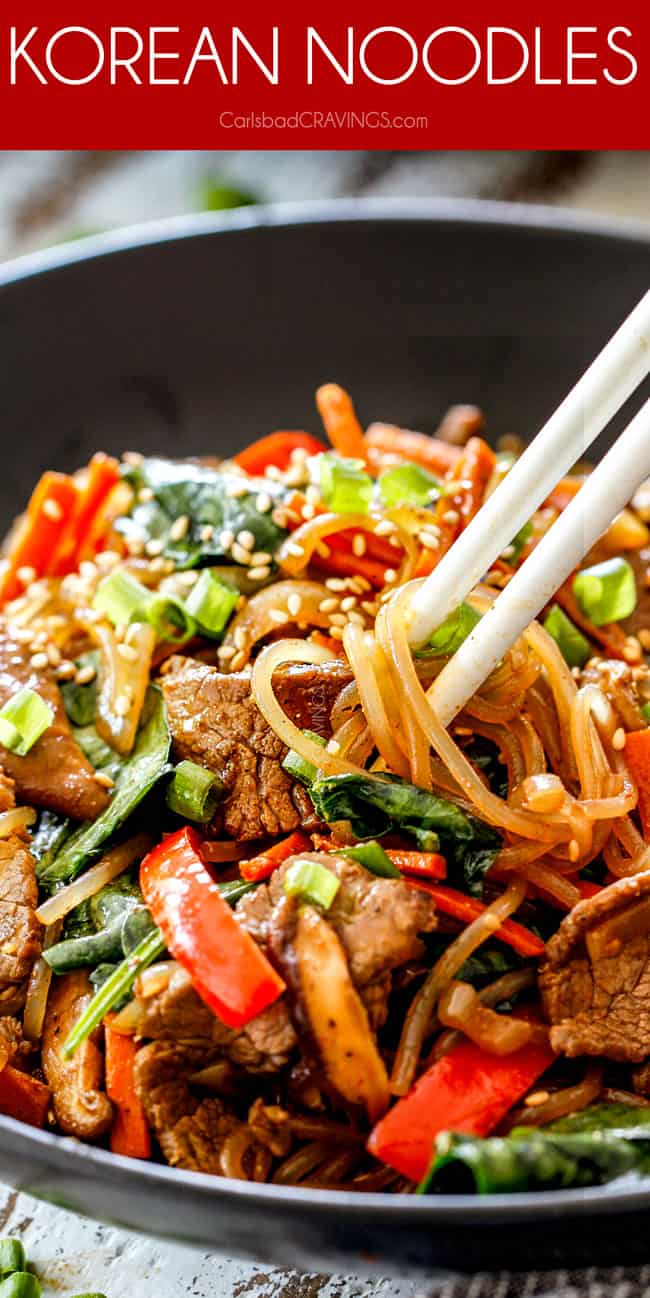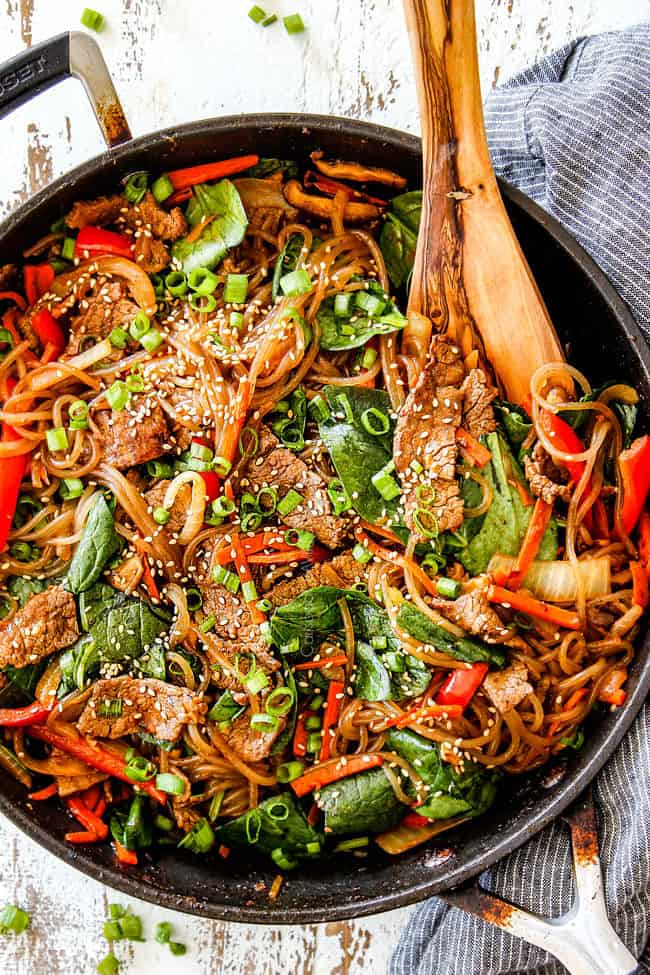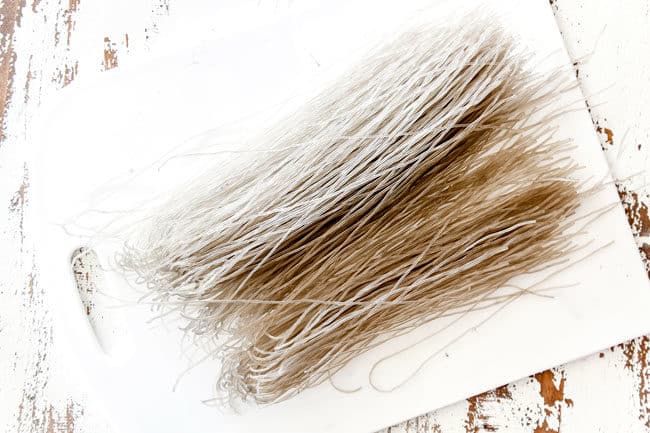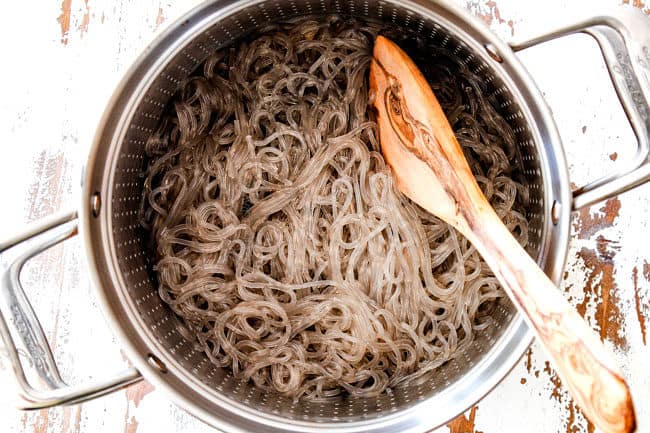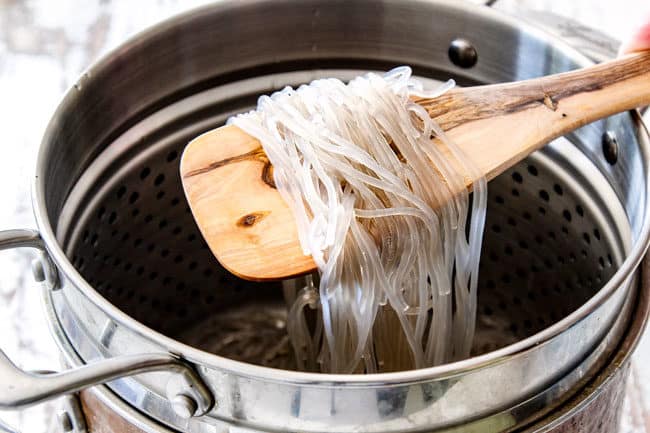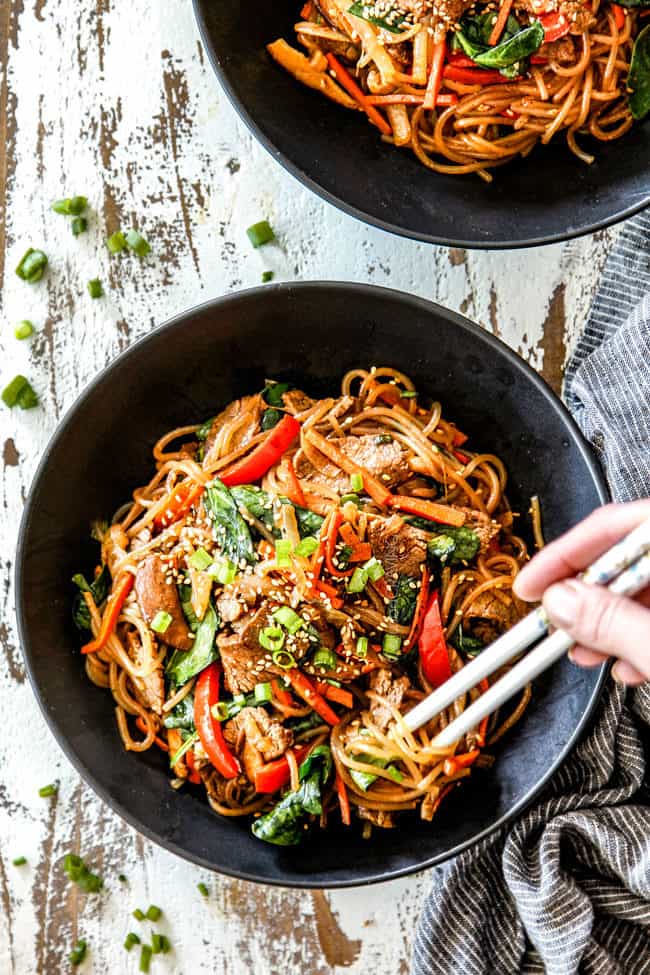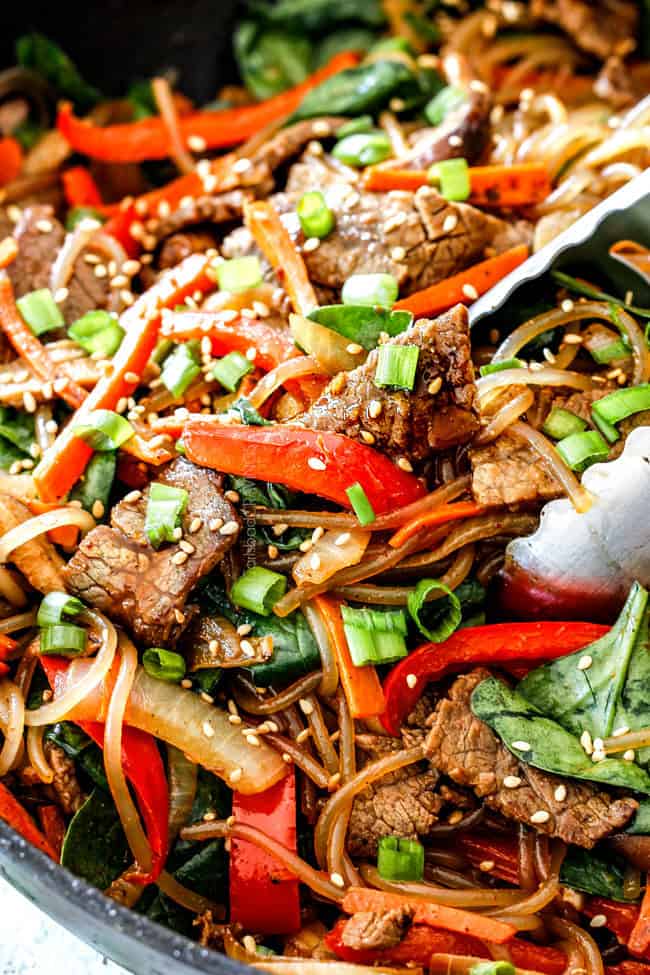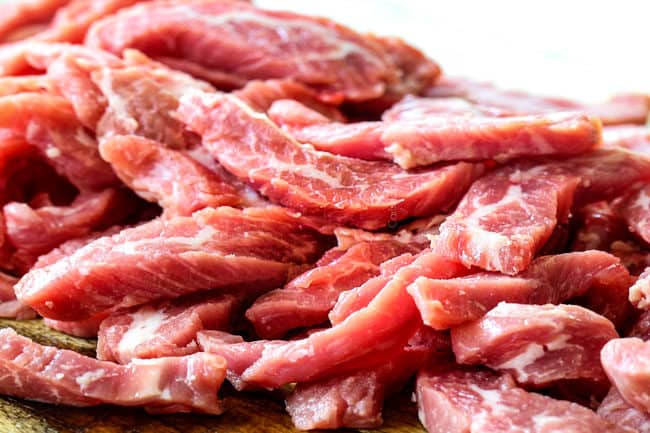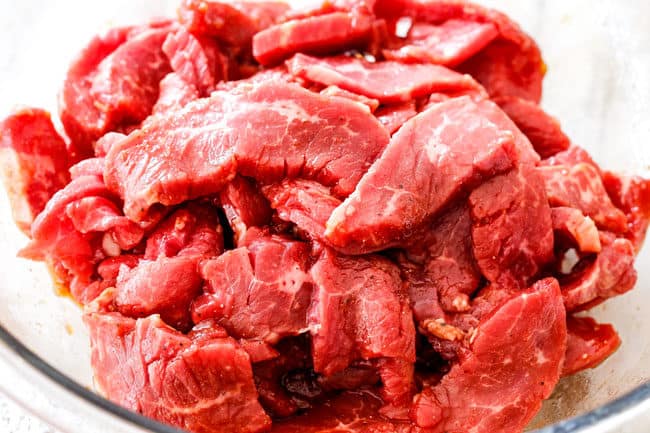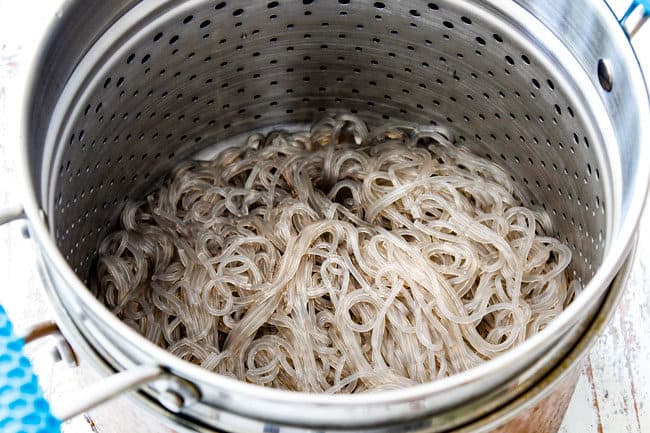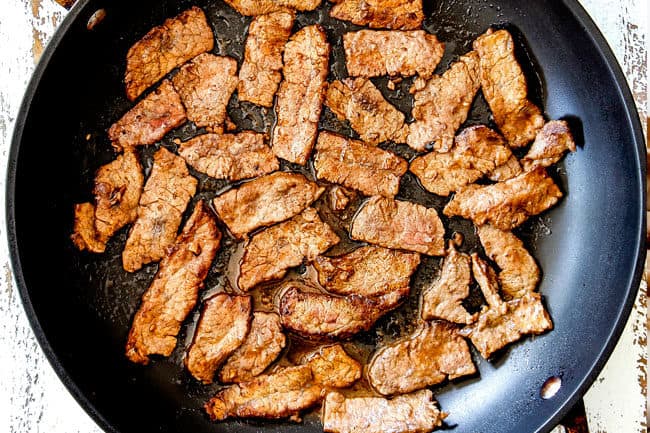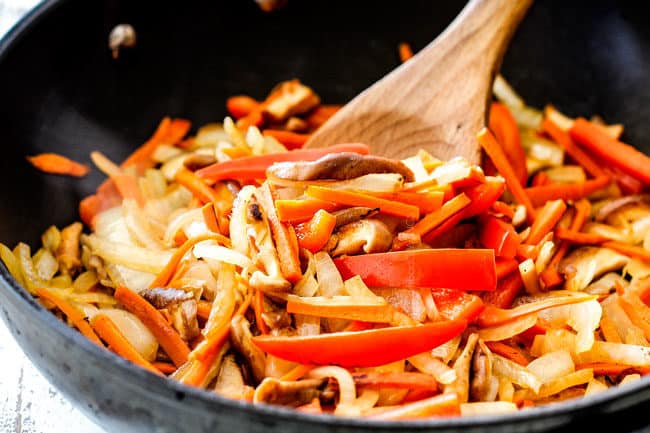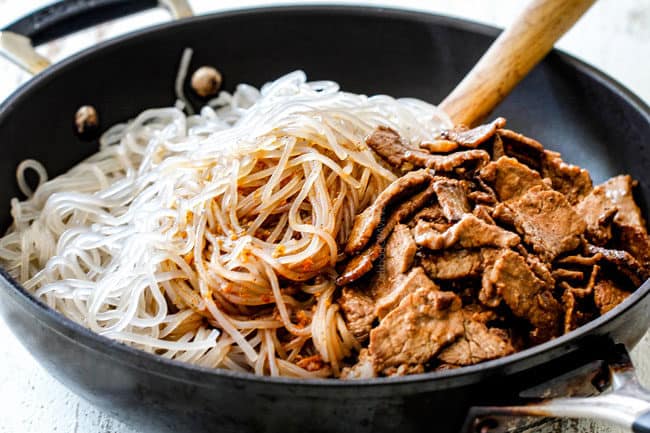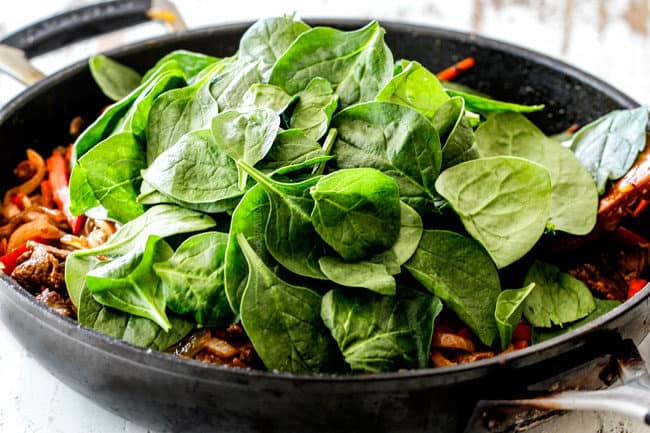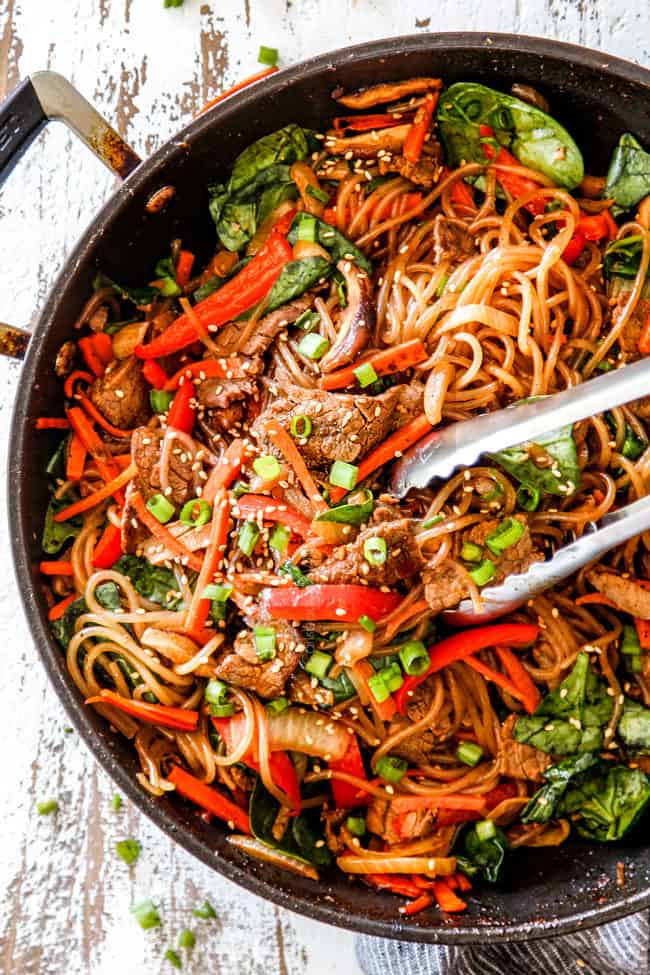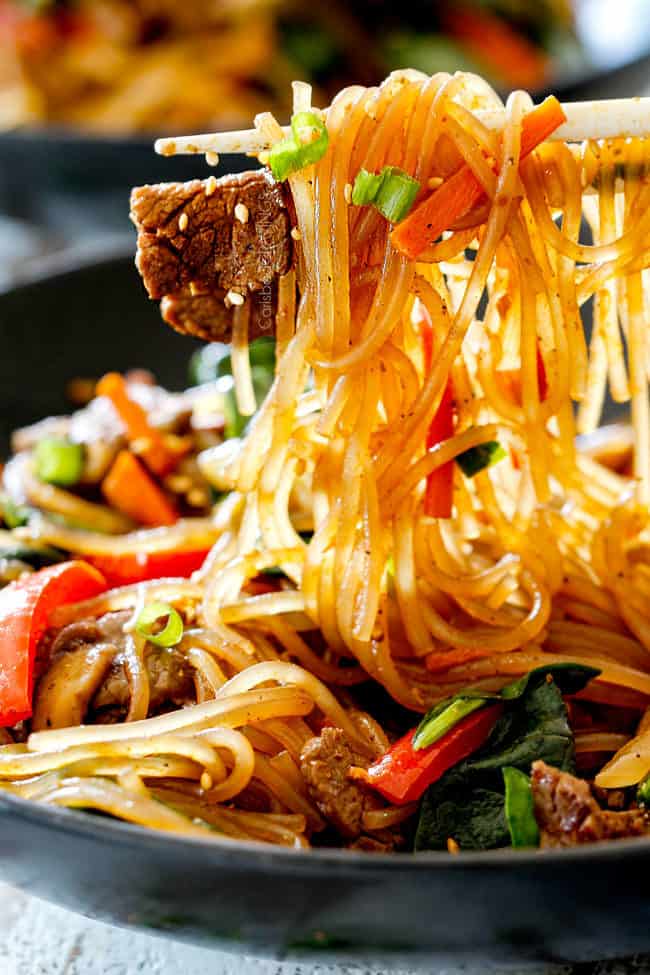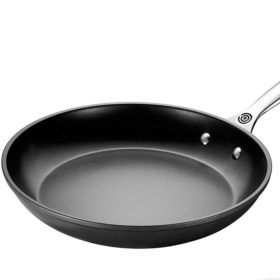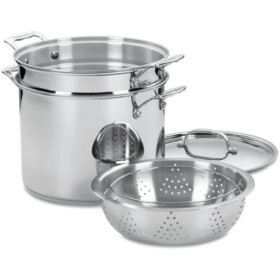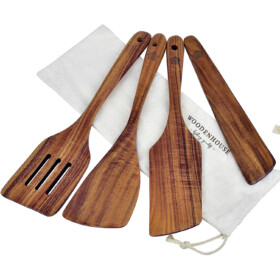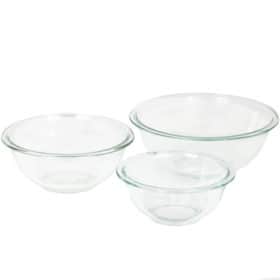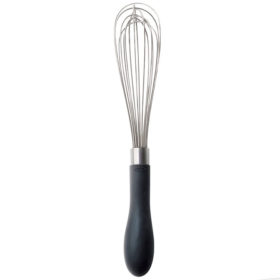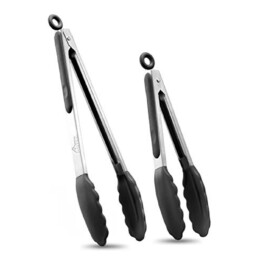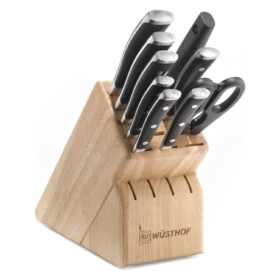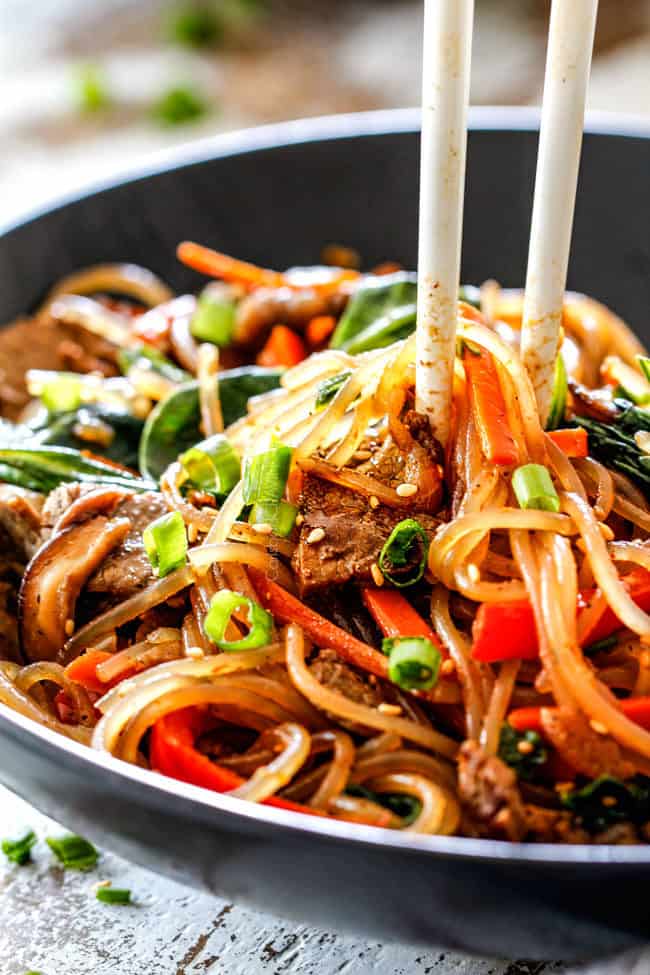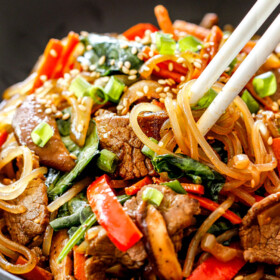What Are Korean Spicy Noodles?
Spicy Korean Noodles are a type of Korean stir-fried noodles (chap chae or jap chae, Japchae translates as mixed vegetables) and is one of the most popular noodle dishes in Korea, and for good reason. These Korean Noodles have to be one of my favorite noodle dishes of all time! Korean Spicy Noodles are characterized by the spicy savory sauce, the use of glass noodles (more on noodles below), thinly sliced protein (usually steak) and vegetables, usually thinly sliced onions, carrots, mushroom, spinach and sometimes bell peppers. I love this cast of characters together but, you can customize your Korean Noodles with whatever you have on hand. They would be delicious with chicken or shrimp, or even go vegetarian, and the veggies can completely be swapped for your favs, or whatever you have on hand.
What are Korean noodles made out of?
The foundation of Korean Spicy Noodles is the glass noodle made with sweet potato starch, called dangmyeon, sometimes called Korean vermicelli, not to be confused with rice vermicelli used in Sesame Noodles.. Glass Noodles are gluten free, fat free, light, springy and absorbs a ton of flavor while still remaining al dente Glass noodles gets their name from the fact that the gray, opaque noodles transform into translucent, spiral glass-like noodles when cooked. The delightfully chewy texture of glass noodles reminds me of the rice noodles used in Pad Thai, and similarly, they remain perfectly al dente texture if not overcooked initially, which makes them great for leftovers.
Where Can I Buy Korean Noodles?
Glass noodles come in a few different varieties. Non-Korean glass noodles are often made with mung bean starch or green pea starch. They can also have different shapes from thin noodles to wide, flat noodles resembling brownish, clear fettucine. We are looking for the thicker, round, grey Korean noodles made from sweet potato starch. If you aren’t sure if the noodles are correct, check the ingredient list for sweet potato starch. I’m sure these Korean Spicy Noodles would taste great with any noodle, but if you are going to the trouble of buying noodles, it would be nice purchase the correct authentic ones.
How do I Cook Korean Glass Noodles?
Glass noodles are boiled like traditional pasta but for a shorter amount of time, usually about 5 minutes, or even less if you are cooking a small quantity of noodles. Take care to rinse and drain the glass noodles in cold water a few times to rinse out the excess starch. If you aren’t immediately adding your Korean Noodles to a sauce, then toss them with a teaspoon of oil to keep them from sticking together. Korean Noodles come in very long strands, so you will want to cut them with kitchen shears before stir-frying.
WHAT KIND OF MEAT IS USED FOR Spicy Korean Noodles?
Rib eye is often use in Korean Spicy Noodles, but I like to use the more economical flanks steak. Although less expensive, flank steak transforms into melt-in-your-mouth-tender by slicing it thin, marinating it and not overcooking it. You will be astonished just how buttery delicious flank steak can become!
HOW DO YOU TENDERIZE BEEF?
The beef in our Korean Spicy Noodles is one of the stars. It is dripping with flavor and buttery tender due to our marinade which also doubles as our sauce. You can either marinate your beef at room temperature for 30 minutes or up to 8 hours in the refrigerator. This is how our marinade ingredients tenderize our beef:
soy sauce: the salt in the soy sauce helps break down the proteins for a more tender texture. Japanese rice wine: is an acidic ingredient that breaks down lean muscle fibers on the surface meat. cornstarch: acts as a binder and helps our soy sauce and rice wine come together and bind to the meat. It also provides a light coating that helps protects it from the intense heat when cooking.
WHAT IS KOREAN SPICY NOODLES SAUCE?
The sauce for Korean Spicy Noodles is one of my absolute favorites. I adapted it slightly from my Korean Beef Bowls, because of its irresistible savory, salty, spiciness. It is a soy-based marinade/sauce which includes:
Toasted sesame oil Low sodium soy sauce Brown sugar Japanese rice wine Gochujang Ginger Garlic Pepper Cornstarch
The cornstarch tenderizes the beef and also helps thicken the sauce. I also like to add 1 ½ teaspoon beef bouillon to the sauce, but this is optional. When I tasted the Korean Sauce without the bouillon, I thought it was missing something, and when I added the bouillon, it was perfect. If you don’t keep beef bouillon on hand you can omit it and season your Korean Spicy Noodles with salt to taste at the very end of cooking. You might be wondering about the Gochujang and the rice wine. Rice wine should become a pantry staple if you do much Asian cooking. Rice wine is NOT rice vinegar- DO NOT switch them out. Rice wine adds a sweetness and depth of flavor while also tenderizing the beef. Rice vinegar, on the other hand will add an acidic flavor.
WHAT IS GOCHUJANG AND WHERE CAN I BUY IT?
Gochujang brings the heat to these Korean Spicy Noodles. Gochujang is a Korean BBQ Sauce that’s the perfect blend of savory, sweet and spicy and one of my absolute favorite Asian condiments.
How Spicy Are korean spicy noodles?
I would say these Korean Spicy Noodles are medium spicy and would be the right amount of heat for those who like spice. If you LOVE spicy, you will want to add more than 2 tablespoons Gochujang. If you know you don’t like spicy foods at all then use less than 2 tablespoons Gochuchang. You can even start with less Gochuchang in the marinade/sauce and add more to individual servings.
HOW DO YOU MAKE korean spicy noodles?
Our Korean Spicy Noodles recipe is very simple but the veggies require some chopping and there is some hands-off time due to the marinating. If you prep your veggies while your beef is marinating, then your noodles can come together super quickly when its “go time.”
Korean Spicy Noodles Recipe Notes
Prep. Have all of your ingredients ready/veggies sliced before you start your stir fry. Mushrooms. Purchase fresh shiitake mushrooms. If you purchase dried mushrooms you will have to soak them in water before using them. You may also substitute another variety of mushroom. Carrots. If you don’t cut your own matchstick carrots, then store-bought matchstick carrots will be much thinner. Add store-bought matchstick carrots to the skillet with the bell peppers and NOT the onions/mushrooms. Customize. Feel to customize the veggie and use your favorites.
LOOKING FOR MORE KOREAN RECIPES?
Beef Bulgogi 30 Minute Korean Beef Bowls Korean BBQ Burgers with Miso Candied Bacons Saucy Korean Beef Stir Fry Korean Steak Tacos
WANT TO TRY THIS KOREAN SPICY NOODLES RECIPE?
Pin it to your ASIAN, BEEF, or DINNER BOARD to save for later!
Find me on Pinterest for more great recipes! I am always pinning :)!
©Carlsbad Cravings by CarlsbadCravings.com
Carlsbad Cravings Original Tag @CarlsbadCravings and Use #CarlsbadCravngs Leave a Review, I Always Love Hearing From You!
Looking for more Asian recipes?
Vietnamese Noodles Potstickers Laksa One Pot Thai Chicken Noodle Soup Beef and Broccoli Slow Cooker Asian Caramel Pork
